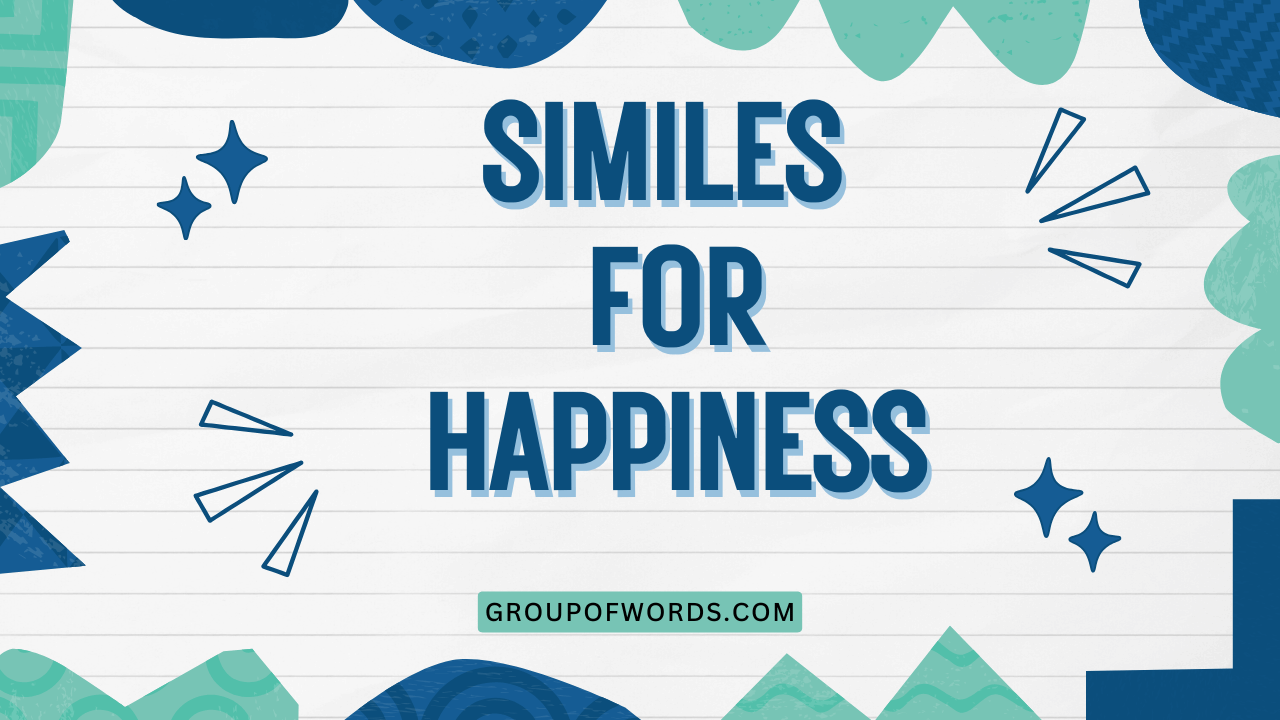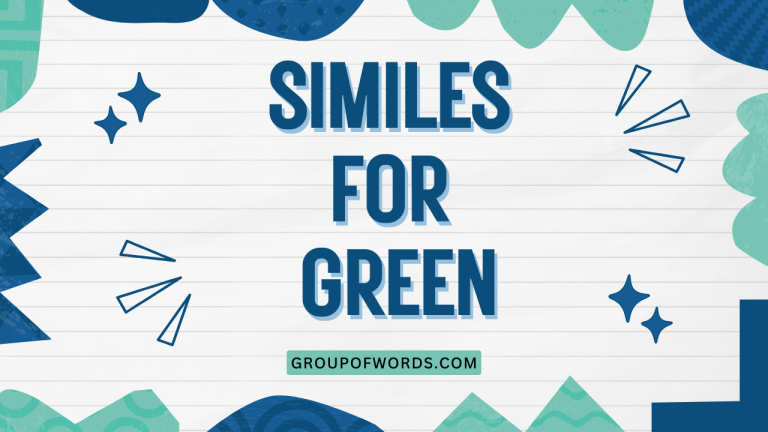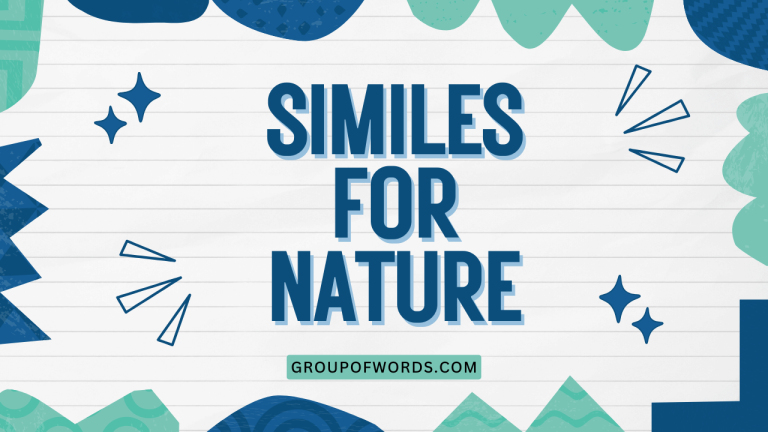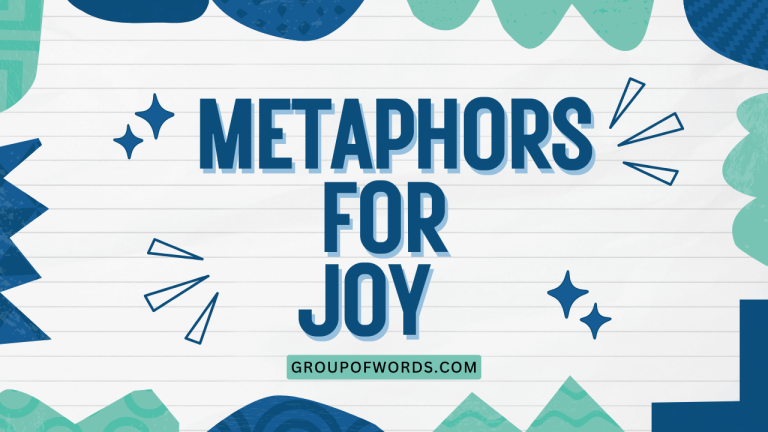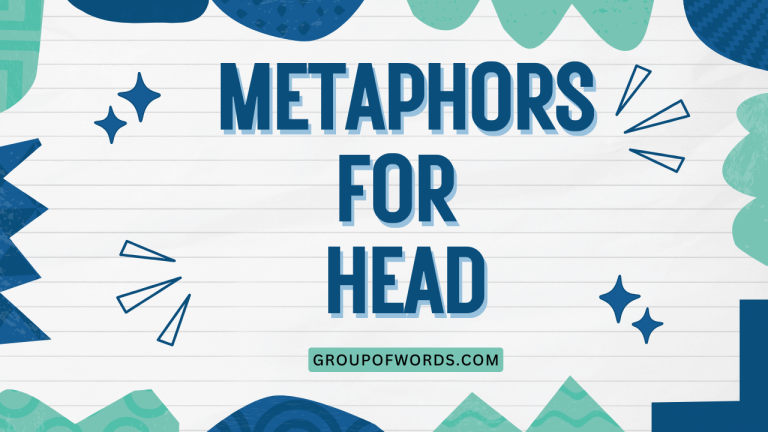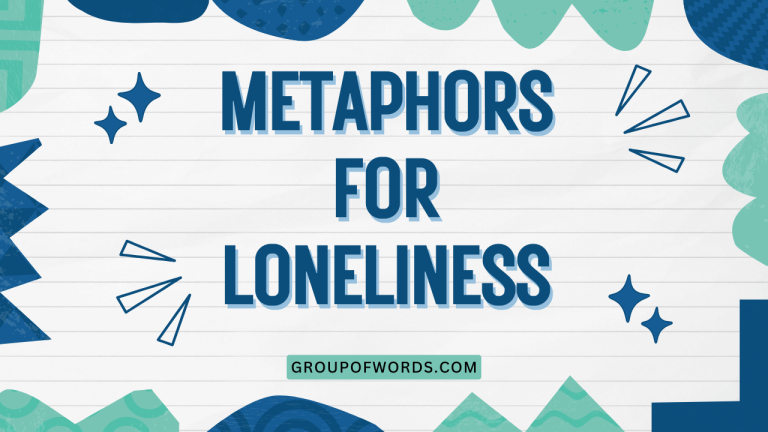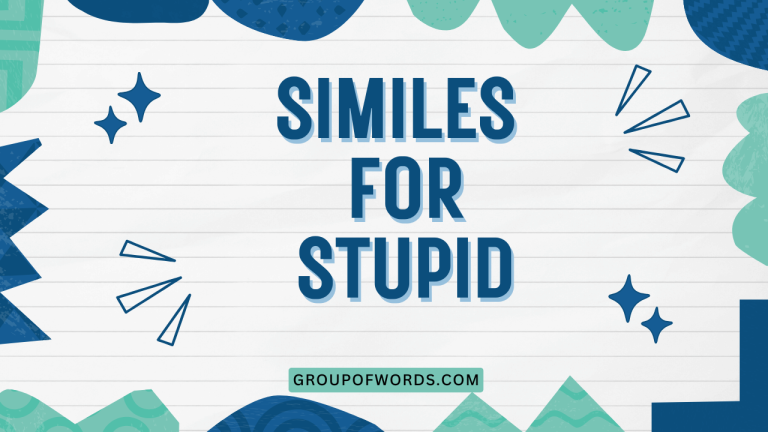Similes for Happiness: A Comprehensive Guide
Understanding and using similes effectively can significantly enhance your writing and communication skills. Similes, a type of figurative language, allow you to draw vivid comparisons and add depth to your descriptions.
This article focuses specifically on similes used to describe happiness, a universal emotion that can be expressed in countless ways. Mastering these similes will enable you to articulate feelings of joy and contentment with greater precision and creativity.
This guide is perfect for English language learners, writers, and anyone looking to enrich their vocabulary and expressive abilities.
Table of Contents
- Introduction
- Definition of Simile
- Structural Breakdown of Similes
- Types of Happiness
- Examples of Similes for Happiness
- Usage Rules for Similes
- Common Mistakes with Similes
- Practice Exercises
- Advanced Topics: Nuances of Happiness
- Frequently Asked Questions
- Conclusion
Definition of Simile
A simile is a figure of speech that directly compares two different things using the words “like” or “as.” It is used to make a description more emphatic or vivid. The purpose of a simile is to create a connection between two seemingly unrelated things to highlight a shared quality or characteristic.
Similes are a fundamental element of figurative language, adding color, depth, and creativity to writing and speech.
In essence, a simile functions as a bridge connecting two distinct entities, allowing the reader or listener to perceive one in terms of the other. This comparison helps to clarify, emphasize, or simply make the description more memorable.
Unlike metaphors, which state that something *is* something else, similes acknowledge the comparison by using “like” or “as.” This distinction is crucial in understanding the nuances of figurative language.
Structural Breakdown of Similes
The basic structure of a simile consists of three key components: the **subject**, the **linking word** (“like” or “as”), and the **object of comparison**. Understanding these elements is crucial for constructing effective and meaningful similes.
- Subject: This is the thing being described or compared. It’s the focus of the simile.
- Linking Word: This is the word that establishes the comparison, typically “like” or “as.”
- Object of Comparison: This is the thing to which the subject is being compared. It should share a relevant characteristic with the subject.
For example, in the simile “He was as happy as a clam,” “He” is the subject, “as” is the linking word, and “a clam” is the object of comparison. The implied shared characteristic is happiness or contentment.
The effectiveness of a simile often depends on the appropriateness and vividness of the object of comparison.
The choice between “like” and “as” is often a matter of style and preference, although “as” is typically used in more formal contexts. Both words serve the same function: to indicate a similarity between two things.
Types of Happiness
Happiness is a complex emotion with many facets. To effectively use similes for happiness, it’s helpful to understand these different types.
Here are a few common categories:
- Pure Joy and Delight: This is a feeling of intense happiness and pleasure, often associated with specific events or experiences.
- Contentment and Peace: This is a more subdued and lasting form of happiness, characterized by a sense of satisfaction and tranquility.
- Excitement and Enthusiasm: This type of happiness is marked by energy, eagerness, and a sense of anticipation.
- Lightheartedness and Glee: This is a playful and carefree form of happiness, often expressed through laughter and amusement.
- Inner Peace and Serenity: This is a deep and profound sense of happiness that comes from within, often associated with spiritual or emotional well-being.
By considering the specific type of happiness you want to describe, you can choose similes that are more accurate and evocative.
Examples of Similes for Happiness
This section provides a wide range of similes for expressing different types of happiness. Each subsection focuses on a specific category of happiness, offering examples tailored to that particular emotion.
Pure Joy and Delight
Pure joy and delight are often associated with intense, immediate happiness. These similes aim to capture that feeling of exhilaration and pleasure.
The similes in the table below exemplify pure joy and delight.
| Simile | Explanation |
|---|---|
| As happy as a clam at high tide | Expresses complete contentment and security. |
| Like a kid in a candy store | Describes the excitement and overwhelming joy of being surrounded by desirable things. |
| As pleased as punch | Indicates extreme satisfaction and delight. |
| Like winning the lottery | Represents the overwhelming joy of unexpected good fortune. |
| As happy as a lark | Conveys a sense of carefree joy and lightheartedness. |
| Like a dog with two tails | Shows unrestrained enthusiasm and happiness. |
| As cheerful as a spring morning | Indicates a bright, fresh, and joyful disposition. |
| Like a child on Christmas morning | Captures the pure, innocent joy and excitement of receiving gifts. |
| As thrilled as a bride on her wedding day | Expresses the unparalleled happiness of a significant life event. |
| Like a bird in flight | Represents freedom, joy, and liberation. |
| As delighted as a painter finishing a masterpiece | Indicates the satisfaction and joy of completing a creative endeavor. |
| Like a swimmer in cool water on a hot day | Describes the refreshing and revitalizing feeling of pure joy. |
| As ecstatic as a fan meeting their idol | Expresses the overwhelming happiness of a dream come true. |
| Like finding a twenty-dollar bill in your old coat | Conveys the unexpected pleasure of a small but delightful surprise. |
| As gleeful as a child playing in the snow | Captures the pure, unadulterated joy of simple pleasures. |
| Like a bee buzzing around a flower | Indicates a busy, joyful, and productive state. |
| As joyous as carolers singing on Christmas Eve | Expresses the festive and communal happiness of a holiday celebration. |
| Like a firefly blinking in the night | Represents a small but radiant spark of joy. |
| As tickled pink as someone receiving a compliment | Indicates a feeling of flattered and delighted happiness. |
| Like a balloon floating in the sky | Describes a feeling of lightness, freedom, and joy. |
| As sparkly as fairy dust | Describes something that is magical and filled with joy. |
| Like sunshine after a storm | Represents the joy and hope that follows a difficult time. |
| As bubbly as champagne | Conveys a sense of effervescence and joyful celebration. |
Contentment and Peace
Contentment and peace are characterized by a sense of satisfaction and tranquility. These similes aim to capture that feeling of quiet happiness and well-being.
The similes in the table below exemplify contentment and peace.
| Simile | Explanation |
|---|---|
| As content as a cat basking in the sun | Describes a state of complete relaxation and satisfaction. |
| Like a warm blanket on a cold night | Represents comfort, security, and contentment. |
| As peaceful as a sleeping baby | Indicates a state of serene tranquility and innocence. |
| Like a quiet stream flowing through a meadow | Conveys a sense of calm and peacefulness. |
| As serene as a mountain lake | Describes a state of undisturbed tranquility and beauty. |
| Like a well-loved book | Represents comfort, familiarity, and lasting contentment. |
| As satisfied as a painter admiring their completed artwork | Indicates the satisfaction derived from completing a fulfilling task. |
| Like a cozy cabin in the woods | Represents seclusion, comfort, and peacefulness. |
| As tranquil as a yoga retreat | Describes a state of deep relaxation and inner peace. |
| Like a gentle breeze on a summer evening | Conveys a sense of calm and refreshing contentment. |
| As fulfilled as a gardener watching their plants grow | Indicates the satisfaction of nurturing and seeing results. |
| Like a purring cat on a lap | Represents comfort, warmth, and contentment. |
| As mellow as a sunset over the ocean | Describes a state of serene beauty and peacefulness. |
| Like a cup of hot cocoa on a snowy day | Represents comfort, warmth, and contentment. |
| As still as a pond at dawn | Indicates a state of perfect calm and tranquility. |
| Like a soft lullaby | Represents comfort, security, and peacefulness. |
| As untroubled as a cloudless sky | Describes a state of perfect peace and freedom from worry. |
| Like a crackling fireplace on a winter night | Represents warmth, comfort, and contentment. |
| As grounded as an ancient tree | Indicates a sense of stability, peace, and connection to nature. |
| Like a comfortable old shoe | Represents familiarity, comfort, and contentment. |
| As smooth as a still ocean | Describes a state of calm and tranquility. |
| Like a gentle rain on parched earth | Represents refreshment and revitalizing contentment. |
| As calm as a monk in meditation | Conveys a sense of deep inner peace and serenity. |
Excitement and Enthusiasm
Excitement and enthusiasm are characterized by energy, eagerness, and anticipation. These similes aim to capture that feeling of heightened emotion and eagerness.
The similes in the table below exemplify excitement and enthusiasm.
| Simile | Explanation |
|---|---|
| Like a rocket launching into space | Represents a surge of energy and excitement. |
| As eager as a puppy waiting for a treat | Describes a state of enthusiastic anticipation. |
| Like a racehorse at the starting gate | Conveys a sense of pent-up energy and readiness. |
| As thrilled as a child going to Disneyland | Indicates intense excitement and anticipation. |
| Like a fan at a rock concert | Represents high energy and enthusiasm. |
| As pumped up as an athlete before a big game | Describes a state of heightened excitement and readiness. |
| Like a volcano about to erupt | Conveys a sense of intense, building excitement. |
| As animated as a cartoon character | Describes a lively and enthusiastic demeanor. |
| Like a firecracker on the Fourth of July | Represents sudden bursts of excitement and energy. |
| As revved up as a motorcycle engine | Indicates a state of high energy and readiness. |
| Like a hummingbird darting from flower to flower | Conveys a sense of quick, energetic movement and excitement. |
| As charged up as a lightning bolt | Describes a surge of intense energy and excitement. |
| Like a rollercoaster climbing the first hill | Represents the anticipation and excitement of an upcoming thrill. |
| As vibrant as a neon sign | Indicates a bright, energetic, and exciting presence. |
| Like a drumroll before a big announcement | Conveys a sense of building anticipation and excitement. |
| As enthusiastic as a salesperson closing a deal | Describes a state of high energy and eagerness. |
| Like a geyser erupting | Represents a powerful and sudden burst of excitement. |
| As spirited as a wild stallion | Indicates a lively, energetic, and enthusiastic nature. |
| Like a pinball machine lighting up | Conveys a sense of fast-paced excitement and energy. |
| As electrified as the air before a thunderstorm | Describes a feeling of intense anticipation and excitement. |
| Like a crowd cheering at a sports game | Represents a collective surge of energy and excitement. |
| As zealous as a volunteer for a cause they believe in | Indicates passionate enthusiasm and dedication. |
| Like a symphony orchestra reaching a crescendo | Conveys a sense of building excitement and powerful emotion. |
Lightheartedness and Glee
Lightheartedness and glee are characterized by a playful and carefree attitude. These similes aim to capture that feeling of joy and amusement.
The similes in the table below exemplify lightheartedness and glee.
| Simile | Explanation |
|---|---|
| As carefree as a dandelion seed floating in the breeze | Describes a state of light and untroubled joy. |
| Like a giggling child | Represents pure, innocent joy and lightheartedness. |
| As playful as a kitten chasing a string | Conveys a sense of amusement and carefree energy. |
| Like a clown at a circus | Indicates a funny, joyful, and entertaining presence. |
| As merry as a group of friends sharing a joke | Describes a state of cheerful and lighthearted camaraderie. |
| Like bubbles rising in a glass of soda | Represents a light, effervescent, and joyful feeling. |
| As whimsical as a fairy tale | Indicates a sense of magical, lighthearted wonder. |
| Like a songbird singing in the morning | Conveys a cheerful, lighthearted, and melodious joy. |
| As jolly as Santa Claus | Describes a cheerful, generous, and lighthearted disposition. |
| Like skipping through a field of flowers | Represents a joyful, carefree, and lighthearted experience. |
| As flippant as a comedian telling jokes | Indicates a playful and lighthearted attitude. |
| Like a balloon animal at a birthday party | Conveys a sense of fun, whimsy, and lightheartedness. |
| As blithe as a character in a musical comedy | Describes a carefree and lighthearted disposition. |
| Like a carousel ride | Represents a joyful, whimsical, and lighthearted experience. |
| As jovial as a host welcoming guests | Indicates a cheerful, friendly, and lighthearted demeanor. |
| Like a feather floating on the wind | Conveys a sense of lightness, freedom, and carefree joy. |
| As sprightly as a leprechaun | Describes a lively, mischievous, and lighthearted nature. |
| Like a child blowing bubbles | Represents a simple, joyful, and lighthearted activity. |
| As waggish as a court jester | Indicates a playful, humorous, and lighthearted attitude. |
| Like a kite dancing in the sky | Conveys a sense of freedom, joy, and lightheartedness. |
| As sunny as a bright summer day | Describes a cheerful, warm, and lighthearted disposition. |
| Like a ripple of laughter | Represents a spontaneous expression of joy and lightheartedness. |
| As gleeful as a child opening a present | Indicates pure, unadulterated joy and lightheartedness. |
Inner Peace and Serenity
Inner peace and serenity are characterized by a deep sense of calm and well-being. These similes aim to capture that feeling of tranquility and contentment.
The similes in the table below exemplify inner peace and serenity.
| Simile | Explanation |
|---|---|
| As still as a pond at dawn | Describes a state of perfect calm and tranquility. |
| Like a quiet meditation | Represents inner peace, reflection, and serenity. |
| As serene as a mountaintop vista | Conveys a sense of peacefulness and perspective. |
| Like a gentle rain on parched earth | Indicates a refreshing and revitalizing sense of peace. |
| As tranquil as a forest glade | Describes a state of undisturbed calm and serenity. |
| Like a soft, warm breeze | Represents comfort, peace, and gentle relaxation. |
| As grounded as an ancient tree | Indicates stability, strength, and inner peace. |
| Like a candle flame burning steadily | Conveys a sense of quiet strength and inner peace. |
| As centered as a yoga master | Describes a state of balance, focus, and inner peace. |
| Like a deep, calming breath | Represents relaxation, peace, and relief from stress. |
| As composed as a seasoned diplomat | Indicates self-assuredness, poise, and inner peace. |
| Like a flowing river finding its course | Conveys a sense of purpose, direction, and inner peace. |
| As resilient as bamboo bending in the wind | Describes the ability to withstand challenges with inner strength. |
| Like a lighthouse guiding ships safely | Represents guidance, stability, and inner peace. |
| As harmonious as instruments playing together | Indicates balance, unity, and inner peace. |
| Like a butterfly emerging from its chrysalis | Conveys transformation, growth, and inner peace. |
| As steadfast as a mountain standing tall | Describes unwavering strength and inner peace. |
| Like a gentle hand soothing a troubled brow | Represents comfort, compassion, and inner peace. |
| As enlightened as a spiritual guru | Indicates wisdom, understanding, and inner peace. |
| Like a seed sprouting in fertile ground | Conveys potential, growth, and inner peace. |
| As balanced as a tightrope walker | Describes control, focus, and inner peace. |
| Like a quiet library full of knowledge | Represents contemplation, wisdom, and inner peace. |
| As whole as a perfectly formed circle | Indicates completeness, unity, and inner peace. |
Usage Rules for Similes
Using similes effectively involves following a few key rules to ensure clarity and impact. These rules govern the appropriateness of the comparison and the overall effectiveness of the simile.
- Ensure a Clear Connection: The two things being compared should share a recognizable characteristic. The connection should be logical and easily understood by the reader.
- Avoid Clichés: Overused similes can sound unoriginal and lack impact. Try to create fresh and imaginative comparisons.
- Be Specific: The more specific the comparison, the more vivid the image will be. Avoid vague or general comparisons.
- Consider the Context: The simile should be appropriate for the tone and style of the writing.
- Use Sparingly: Overusing similes can make your writing sound forced and artificial. Use them judiciously to enhance your descriptions.
Common Mistakes with Similes
Several common mistakes can undermine the effectiveness of similes. Being aware of these errors can help you avoid them in your own writing.
| Mistake | Incorrect Example | Correct Example |
|---|---|---|
| Using a cliché | He was as happy as a bee. | He was as happy as a bee buzzing around a field of wildflowers. |
| Making an unclear comparison | She was as happy as a rock. | She was as happy as a child receiving a puppy. |
| Using an illogical comparison | He was as happy as a sad clown. | He was as happy as a kid in a candy store. |
| Overusing similes | The day was like sunshine. He felt like a million dollars. Everything was as perfect as could be. | The day was filled with sunshine, and he felt like a million dollars. |
Practice Exercises
Test your understanding of similes with these practice exercises. Each question requires you to either identify the simile or create one based on a given scenario.
- Identify the simile: “Her laughter was like music to his ears.”
- Create a simile: Describe the feeling of excitement before a big event.
- Identify the simile: “He was as content as a cat basking in the sun.”
- Create a simile: Describe the feeling of inner peace after a long meditation.
- Identify the simile: “She was as happy as a lark.”
- Create a simile: Describe the feeling of lightheartedness on a summer day.
- Identify the simile: “His joy was like a warm fire on a cold night.”
- Create a simile: Describe the feeling of pure joy when receiving good news.
- Identify the simile: “They were as jolly as Santa Claus.”
- Create a simile: Describe the feeling of contentment after a delicious meal.
Answer Key:
- “like music to his ears”
- Example: Like a rocket about to launch.
- “as content as a cat basking in the sun”
- Example: As still as a pond at dawn.
- “as happy as a lark”
- Example: As carefree as a dandelion seed floating in the breeze.
- “like a warm fire on a cold night”
- Example: Like winning the lottery.
- “as jolly as Santa Claus”
- Example: Like a warm blanket on a cold night.
Advanced Topics: Nuances of Happiness
For advanced learners, exploring the nuances of happiness can lead to more sophisticated and impactful use of similes. This involves understanding the cultural, personal, and situational factors that influence how happiness is perceived and expressed.
For instance, happiness can be expressed differently in different cultures. Some cultures value collective happiness over individual happiness, while others prioritize stoicism and emotional restraint.
Understanding these cultural differences can help you choose similes that are culturally appropriate and sensitive.
Furthermore, personal experiences and perspectives can shape an individual’s understanding of happiness. A simile that resonates with one person may not have the same impact on another.
Considering your audience and their potential experiences can help you craft similes that are more meaningful and effective.
Finally, the specific situation or context can influence the type of happiness being expressed. A simile that is appropriate for describing the joy of a wedding may not be suitable for describing the contentment of a quiet evening at home.
Paying attention to the context can help you choose similes that are accurate and evocative.
Frequently Asked Questions
- What is the difference between a simile and a metaphor?
A simile is a comparison using “like” or “as,” while a metaphor directly states that one thing *is* another. Similes are explicit comparisons, while metaphors are implicit.
- Why are similes important in writing?
Similes add vividness, depth, and creativity to writing. They help readers visualize and understand concepts more effectively by drawing comparisons to familiar things.
- How can I avoid using clichés when creating similes?
To avoid clichés, think outside the box and try to find unique and unexpected comparisons. Consider specific details and sensory experiences to create fresh and original similes.
- Is it okay to use similes in formal writing?
Yes, but use them sparingly and ensure they are appropriate for the tone and style of the writing. Avoid overly informal or colloquial similes in formal contexts.
- Can a simile be too complex or confusing?
Yes, if the comparison is too obscure or illogical, it can confuse the reader. Make sure the connection between the two things being compared is clear and easily understood.
- How do I choose the right simile for a particular situation?
Consider the specific emotion or feeling you want to convey, as well as the context and audience. Choose a simile that is accurate, evocative, and appropriate for the situation.
- Are there any cultures where similes are not commonly used?
While figurative language is present in most cultures, the specific types and frequency of use can vary. Some cultures may prefer more direct and literal language, while others embrace figurative expressions more readily.
- What makes a simile effective?
An effective simile is clear, vivid, original, and appropriate for the context. It creates a strong connection between the two things being compared and enhances the reader’s understanding and appreciation of the description.
Conclusion
Mastering the art of using similes for happiness can significantly enhance your ability to express emotions and create vivid imagery in your writing. By understanding the structure, types, and usage rules of similes, you can craft compelling descriptions that resonate with your audience.
Remember to avoid clichés, be specific, and consider the context to create similes that are both effective and original.
Continue practicing and experimenting with different similes to expand your vocabulary and refine your writing skills. Pay attention to how other writers use similes and learn from their techniques.
With dedication and practice, you can become a master of figurative language and express the nuances of happiness with greater precision and creativity.
